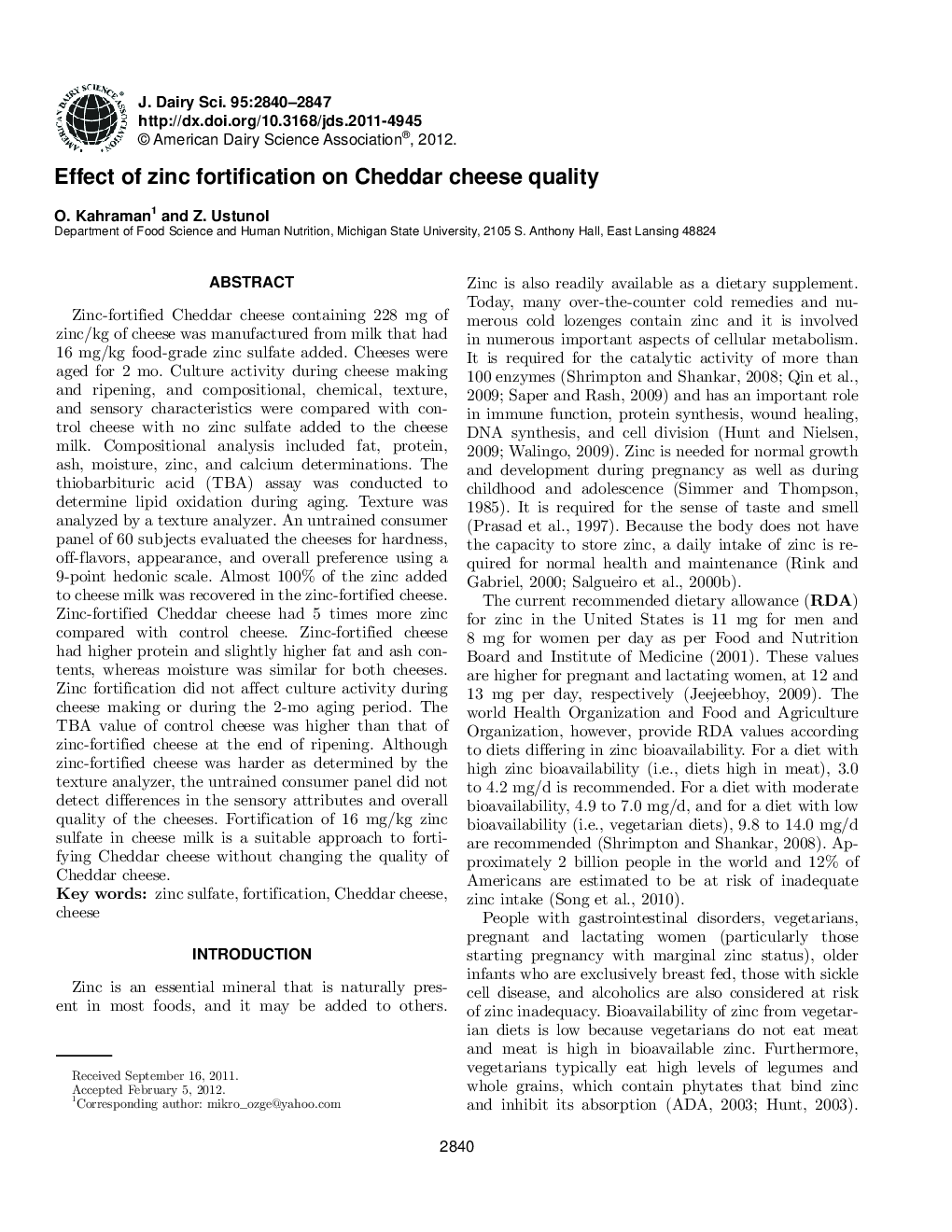| Article ID | Journal | Published Year | Pages | File Type |
|---|---|---|---|---|
| 10975576 | Journal of Dairy Science | 2012 | 8 Pages |
Abstract
Zinc-fortified Cheddar cheese containing 228Â mg of zinc/kg of cheese was manufactured from milk that had 16Â mg/kg food-grade zinc sulfate added. Cheeses were aged for 2 mo. Culture activity during cheese making and ripening, and compositional, chemical, texture, and sensory characteristics were compared with control cheese with no zinc sulfate added to the cheese milk. Compositional analysis included fat, protein, ash, moisture, zinc, and calcium determinations. The thiobarbituric acid (TBA) assay was conducted to determine lipid oxidation during aging. Texture was analyzed by a texture analyzer. An untrained consumer panel of 60 subjects evaluated the cheeses for hardness, off-flavors, appearance, and overall preference using a 9-point hedonic scale. Almost 100% of the zinc added to cheese milk was recovered in the zinc-fortified cheese. Zinc-fortified Cheddar cheese had 5 times more zinc compared with control cheese. Zinc-fortified cheese had higher protein and slightly higher fat and ash contents, whereas moisture was similar for both cheeses. Zinc fortification did not affect culture activity during cheese making or during the 2-mo aging period. The TBA value of control cheese was higher than that of zinc-fortified cheese at the end of ripening. Although zinc-fortified cheese was harder as determined by the texture analyzer, the untrained consumer panel did not detect differences in the sensory attributes and overall quality of the cheeses. Fortification of 16Â mg/kg zinc sulfate in cheese milk is a suitable approach to fortifying Cheddar cheese without changing the quality of Cheddar cheese.
Related Topics
Life Sciences
Agricultural and Biological Sciences
Animal Science and Zoology
Authors
O. Kahraman, Z. Ustunol,
